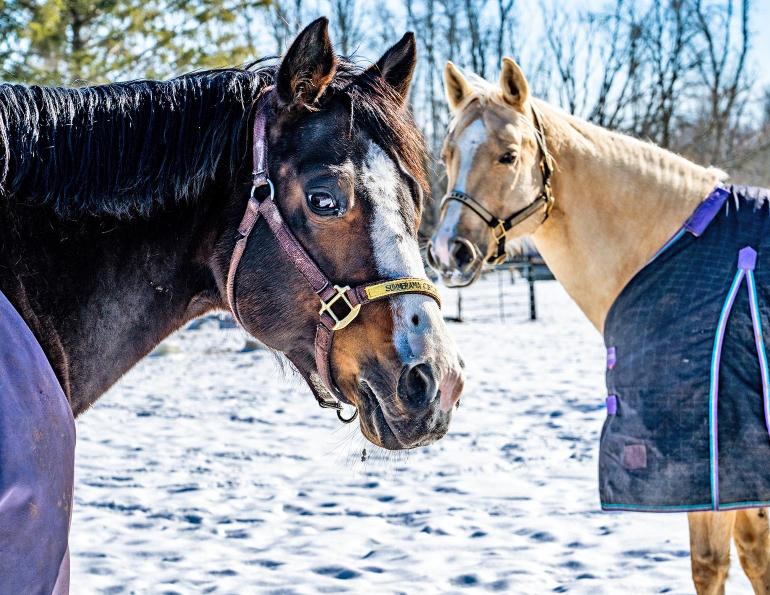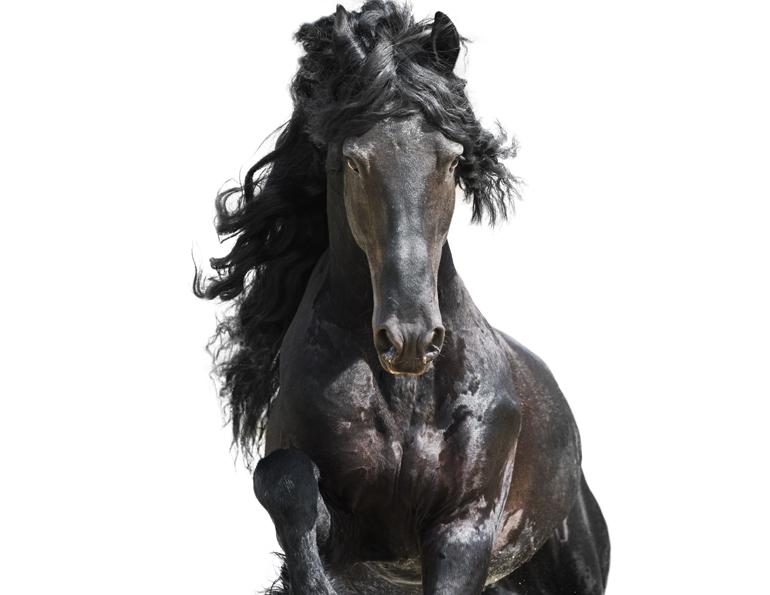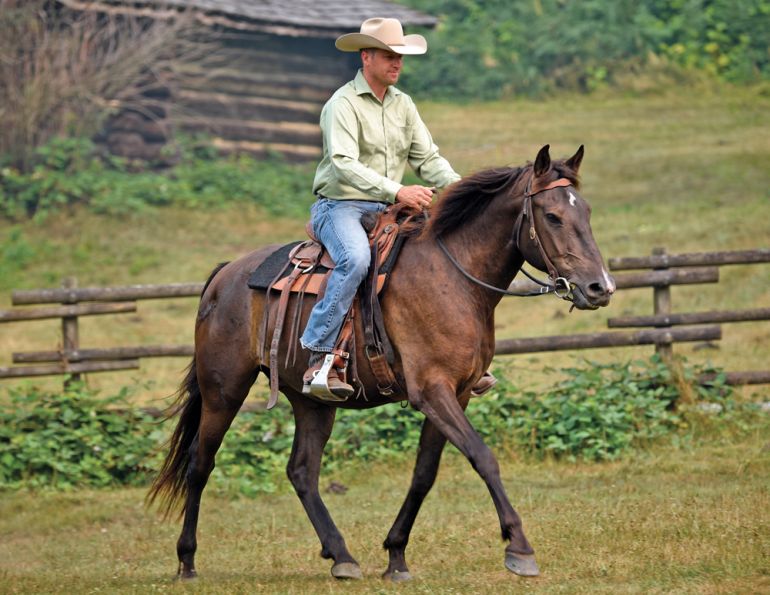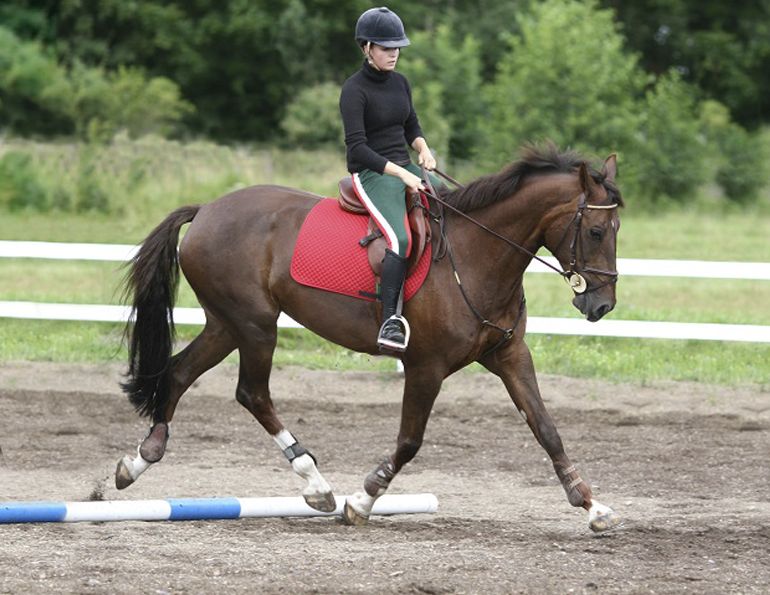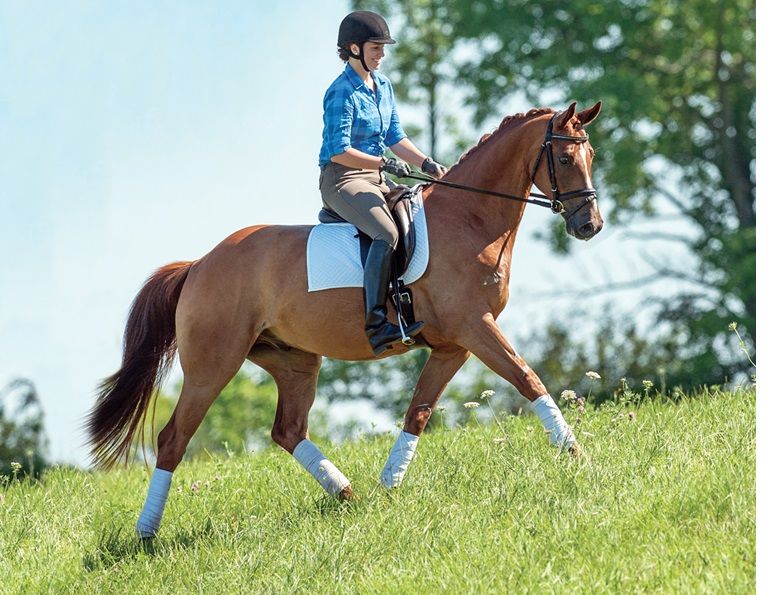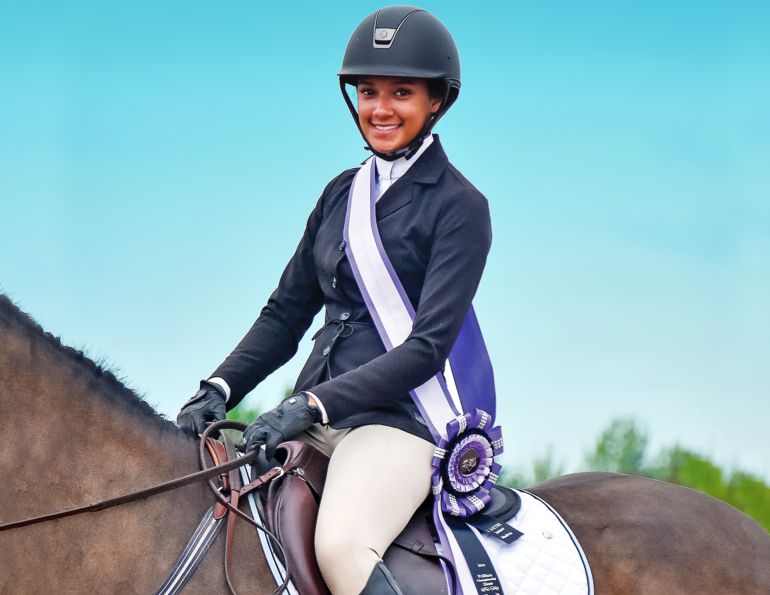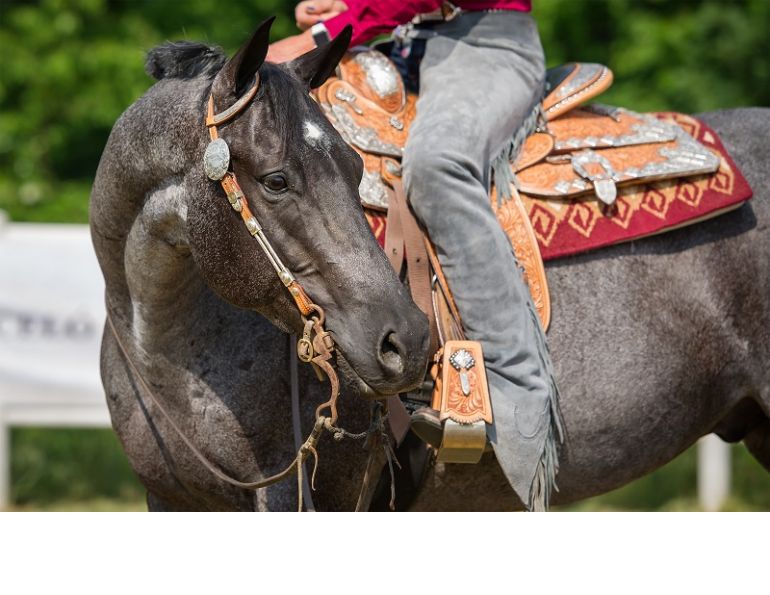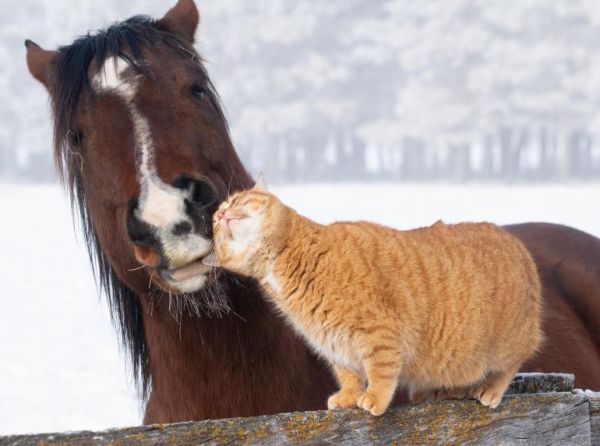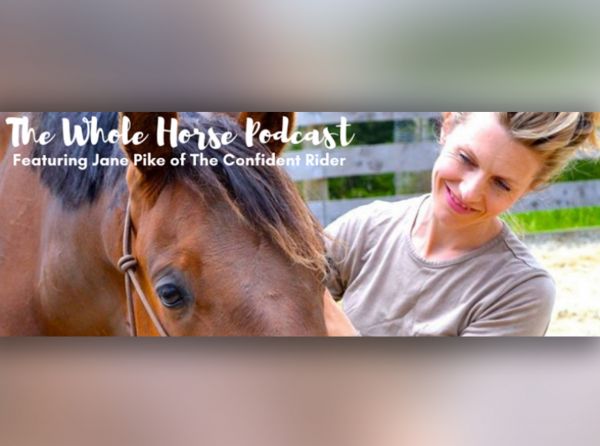3 Rules to Maximize Time Off
By Jec Aristotle Ballou
Periods of downtime come as realistic parts of horse ownership, although how a rider uses these stretches of poor weather or busy schedules contributes profoundly to a horse’s long-term soundness and performance. Recent data from biomechanics researchers and veterinary schools shows that large vacillations in fitness can be detrimental to overall health, particularly for horses past their mid-teen years. Most notably, periods of lesser activity lasting over a month can weaken deep postural muscles and supporting soft tissue. When a horse is once again placed in a workout routine, he is more likely to use compensatory postures and muscles, leading to lackluster performance or injury, not to mention fail to progress in his training. Below I offer three simple rules to not only manage times of lesser activity, but to use them to actually move your training forward.
First, it is worth dispelling the myth that horses somehow hold on to acquired levels of fitness when their weekly training schedule drops below three times per week. This is not the case. De-training effects can be measured in the cardiovascular system as early as two weeks after a workload reduction. Following layoffs longer than a month, losses of musculoskeletal strength, bone density, and tendon and ligament tonicity can be detected. These structures, once weakened, require considerably longer re-conditioning than the cardiovascular system. In fact, most horses are held back by weakness or failings in these underlying soft tissues, not from deficiencies in cardiovascular or gymnastic muscle strength.
A general rule of thumb in exercise physiology is to allow one month of progressive re-conditioning for each month off. A better rule might be to not allow these losses of underlying strength in the first place. The good news is that you do not need a big time investment to prevent them.
Rule One: Prioritize Calisthenics
When wintry weather or hectic schedules interfere with your riding time, don’t throw in the towel or rely on paddock turnouts to give your horse’s body what it needs. Used effectively, these periods of reduced activity can yield productive outcomes. How? When not accessing his patterned daily body habits, or muscle memory, through his regular workout routines, the horse’s nervous system can adapt to new habits. For horses with habits to un-learn, such as crookedness, hollowness, side-dominance, etc., this is the best time to make permanent changes. Think of these periods as rewiring his nervous system. By contributing to a brief but consistent daily schedule of calisthenics, you can optimize the horse’s deep muscles responsible for influencing posture and stabilizing his spine and pelvis. This muscle system in particular suffers when reintroduced to exercise after time off.
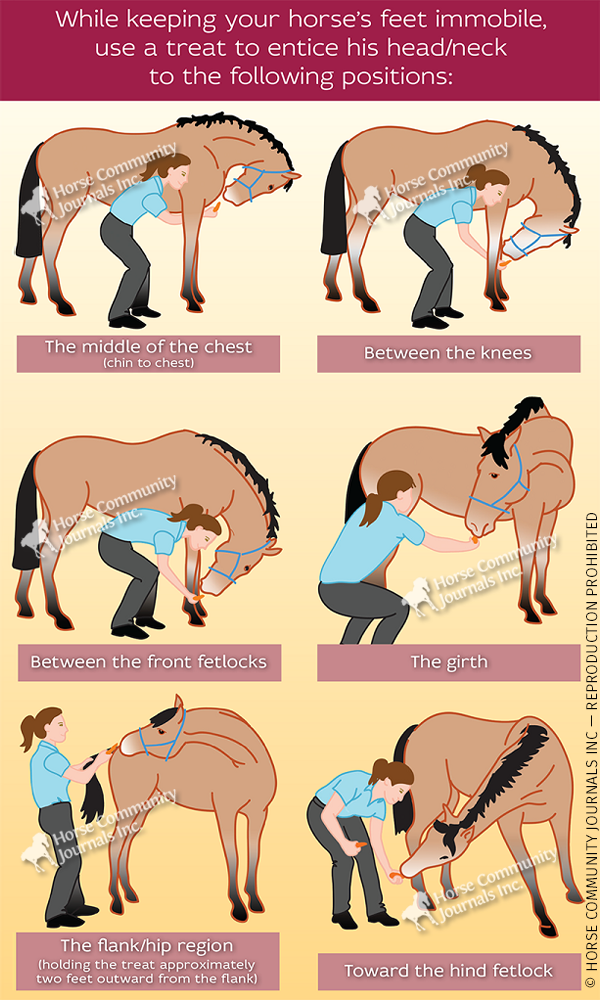
In just 20 minutes per day at least four to five times per week, you can achieve worthy results. In fact, research at Michigan State University demonstrated that by performing dynamic mobilization exercises every day, laid off horses were able to maintain nearly 80 percent of the tone in their spinal stabilizing muscles compared to horses in full riding training. Begin your 20 minute calisthenics session with these maneuvers.
While keeping your horse’s feet immobile, use a treat to entice his head/neck to the following positions:
- The middle of the chest (chin to chest)
- Between the knees
- Between the front fetlocks
- The girth
- The flank/hip region (holding the treat approximately two feet outward from the flank)
- Toward the hind fetlock
Once you have completed these maneuvers, ask your horse to walk backwards 30 steps, which will activate his abdominal muscles and hamstrings while mobilizing his lumbar spine. Then walk him back and forth over a row of five to eight ground poles (spaced roughly two and a half feet apart) a total of 25 times. This simple mini routine should take you less than 20 minutes but when done consistently every day, it will pay big rewards for your horse. You will not only maintain tone in his postural muscles but, in the case of poor body habits, be able to create new neural pathways and muscle memories. Do not worry yourself about losses in cardiovascular fitness. The horse’s cardio system, unlike his soft tissue, adapts rapidly and efficiently once full training re-starts.
Related: How to Safely Condition Young Horses
Rule Two: Prioritize Movement
This rule comes with the caveat to emphasize creativity as movement can take a variety of forms. Without a riding or training program, there are still lots of ways to bring more movement to your horse’s day. Too many riders falsely assume their horses move around in the paddocks more than they do. A good rule of thumb is to rely on turnouts for your horse’s mental health, but not always for his physical well-being; most horses move around less than we think, and in most cases this movement is erratic rather than continuous. Circulating blood, oxygen, and gas molecules around the body helps flush toxins and inflammation that otherwise collect in joints. It also nourishes soft tissues, so they can remain pliable and resilient. Digestion and immunity also need adequate circulation to function optimally. Given the lack of a central pump, the horse’s lymphatic system relies on pulsations from the digestive system as well as from muscular contractions caused by movement.
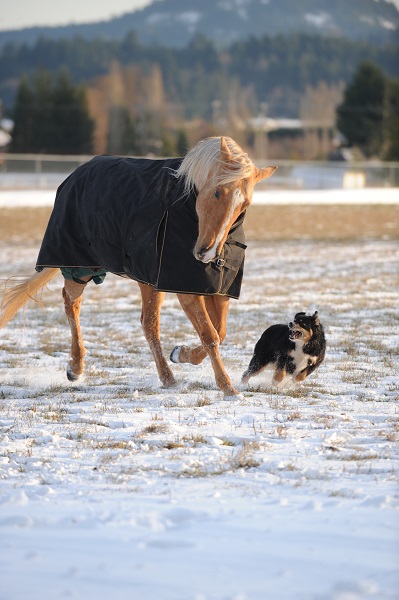
Turnout is important for the horse’s mental health, but for physical conditioning more movement is needed. During turnout, most horses do not sustain the continuous physical activity that is important to keep their systems functioning properly. Photo: Robin Duncan Photography
The simplest, and arguably the best way to add movement to your horse’s day is to take him for a brisk walk. In an active walk, the horse’s back pulsates and swings, helping to remove tension and muscle-bunching. The trot, during which it must serve as a balancing rod for the diagonal leg sequences, does not have the same swinging effect. Walking your horse daily — in-hand, ponying, ground driving, hot walker, longe line — for 15 to 30 minutes uninterrupted will ensure his circulatory system stays tuned up. His layoff will not be afflicted with stiffness, inflammation, or poor blood supply.

When the horse’s training schedule drops below three times per week, the effects can be measured in the horse’s cardiovascular system as early as two weeks after the reduced training schedule began. Photo: ©CanStockPhoto.com/BobLoblaw66
Absent the rigors and structures of a normal training routine, get creative with bringing movement to your horse’s day. Set up obstacles to wander around, play with a soccer ball, teach him groundwork exercises. At our farm, I like to leave a box set up on the ground formed by four poles and then we use it in all kinds of ways to walk over, sidepass, circle around, walk cloverleaves in and out of the box, and so on. Nearby is a gently sloped driveway where we can ask the horses to walk up backwards. The formality of type of movement doesn’t matter; what counts is just that he moves. Think of sustained movement as flushing his whole operating system daily to ensure proper functioning.
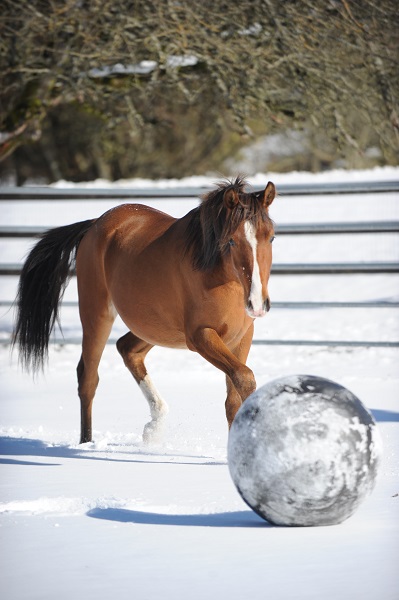
Be creative in encouraging movement by setting up obstacles for horses to wander around, providing toys to play with, and by teaching groundwork exercises. Photo: Robin Duncan Photography
Rule Three: Log Re-Entry to Training
Eager to catapult back in to riding full-time, most riders try to bypass the progressive reconditioning that is necessary to ensure proper adaptations in aerobic metabolic pathways, muscular stamina, and strength. At best, they might keep a vague schedule or, worse, no schedule at all. Following a clear written schedule is the fastest way to progress. Logging actual work prevents riders from making estimates about the effort and consistency of their schedules; it keeps riders accountable and makes the conditioning measurable.
Allow at least six weeks of consistent (three to four days per week of training) but mellow exercise for the horse’s baseline cardiovascular fitness to adapt. To avoid injuries, increase the horse’s workload by no more than ten percent every two weeks. Remember that workload can be increased by duration or by intensity of effort, but not both at the same time. So, for instance, after three weeks of easy 30 minute rides and longe line workouts, you could either add longer training sessions over the next week OR you could continue with 30 minute sessions but add exercises that would increase the intensity of effort by roughly ten percent, such as riding on different surfaces, obstacle patterns, and canter transitions.
Related: How Does Footing Affect Fitness in Horses?
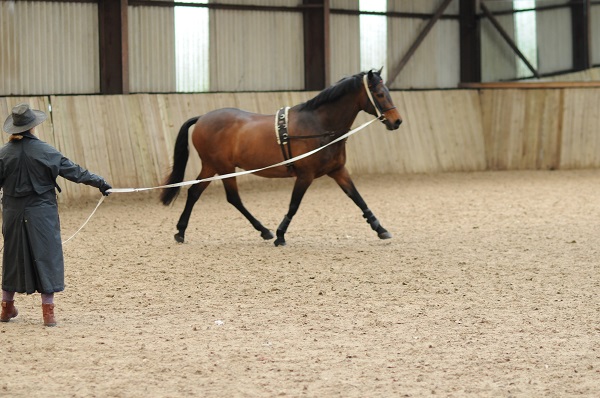
When training begins again, start with at least six weeks of consistent, relaxed exercise and increase the workload by no more than ten percent every two weeks. Photo: Steven Lilley-Sk8geek Flickr
Over the initial six week build-up, your workouts should become gradually longer as described above, but you want to keep your horse’s heart rate well below maximal effort. In fact, exercise during this phase should be at a low heart rate (110 to 120 beats per minute). This means no sprinting, aggressive hill riding, sustained gallops or vigorous interval training. Keep workouts at a steady but low to moderate pace.
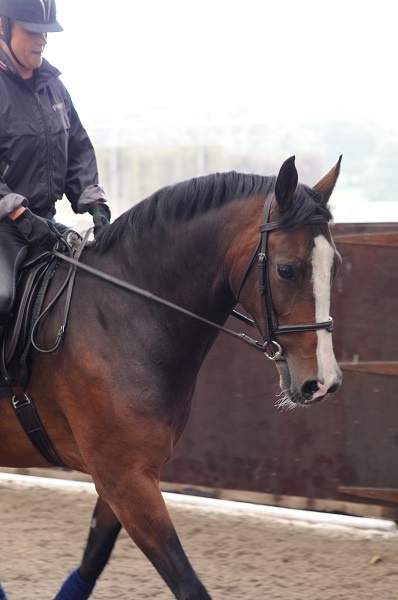
A good rule of thumb is to allow a month of progressive re-conditioning for each month of downtime. Make the conditioning measureable by creating a written schedule of work and logging progress. Photo: Steven Lilley-Sk8geek/Flickr
Many riders make the mistake of relying primarily on respiration rates to gauge increased fitness levels. Respiration, the horse’s means of shedding body temperature, is not an accurate means of assessing metabolic gains or muscular effort. Get in the habit of writing down what you did each day in your workout and for how long. This way, you will be able to tell for sure, without guessing, that you are building up his workload by ten percent every two weeks by adding duration or intensity. It will also prevent you from working the horse at the same intensity levels daily, risking repetitive strain and slower metabolic adaptations to exercise. Remember to vary the difficulty level of workouts either through duration or intensity day to day. For this, I recommend the simple formula of Easy Day — Moderate Day — Hard Day, and then repeat the cycle again.
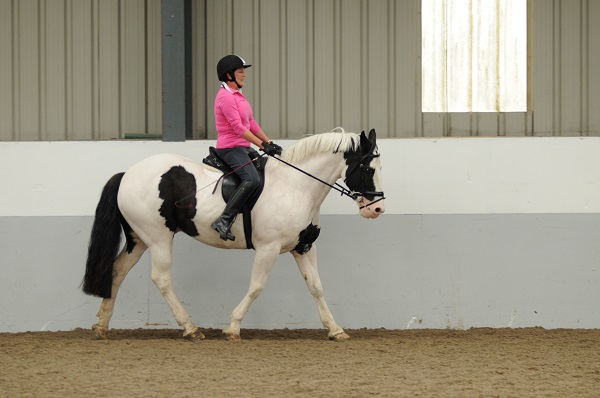
After the initial six weeks, the duration and intensity of workouts can increase, but always in keeping with the guideline rate of ten percent every two weeks. Rather than working the horse at the same intensity every day which risks repetitive strain and injury, vary the difficulty by following the simple formula of Easy Day – Moderate Day – Hard Day, then repeat the cycle. Photo: Steven Lilley-Sk8geek/Flickr
After a period of downtime focused on calisthenics and postural muscle recruitment, re-entering a full-time routine should be seamless. Meanwhile, the horse’s circulation, digestion, and muscle function should be well-primed after ensuring he has received easy but sustained daily movement during his layoff. By following my simple rules above, your training will continue to move forward from season to season even with interruptions to your routines.
Jec Aristotle Ballou trains in Santa Cruz, CA, when not giving clinics around the United States. She is the author of 101 Dressage Exercises for Horse and Rider, Equine Fitness, and the newly released 101 Western Dressage Exercises for Horse and Rider. For further resources on the above topics, she recommends the following books: Equine Fitness by Jec A. Ballou, and Beyond Horse Massage by Jim Masterson.
Related: Lunging Horses - Why Bother?
Related: Spring Conditioning Your Horse
Main Photo: Unsplash/Chris Robert



